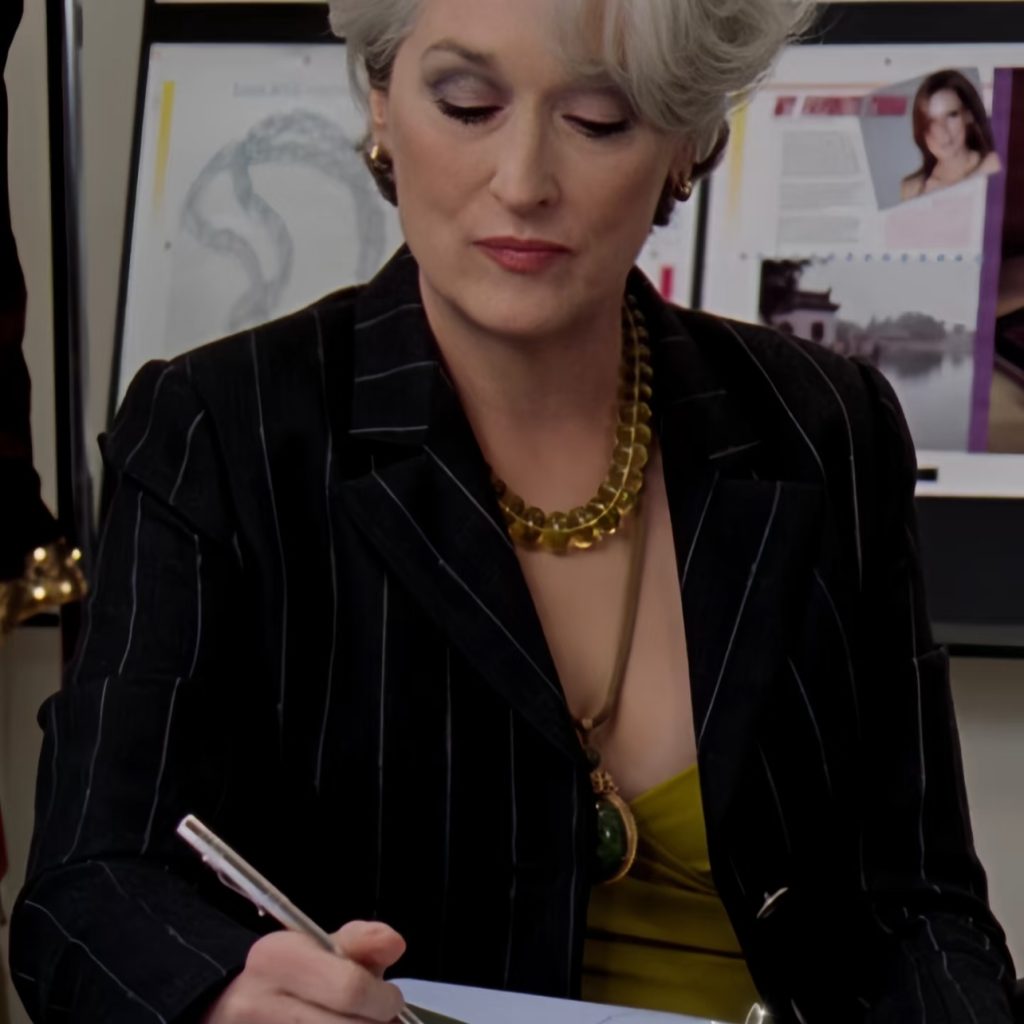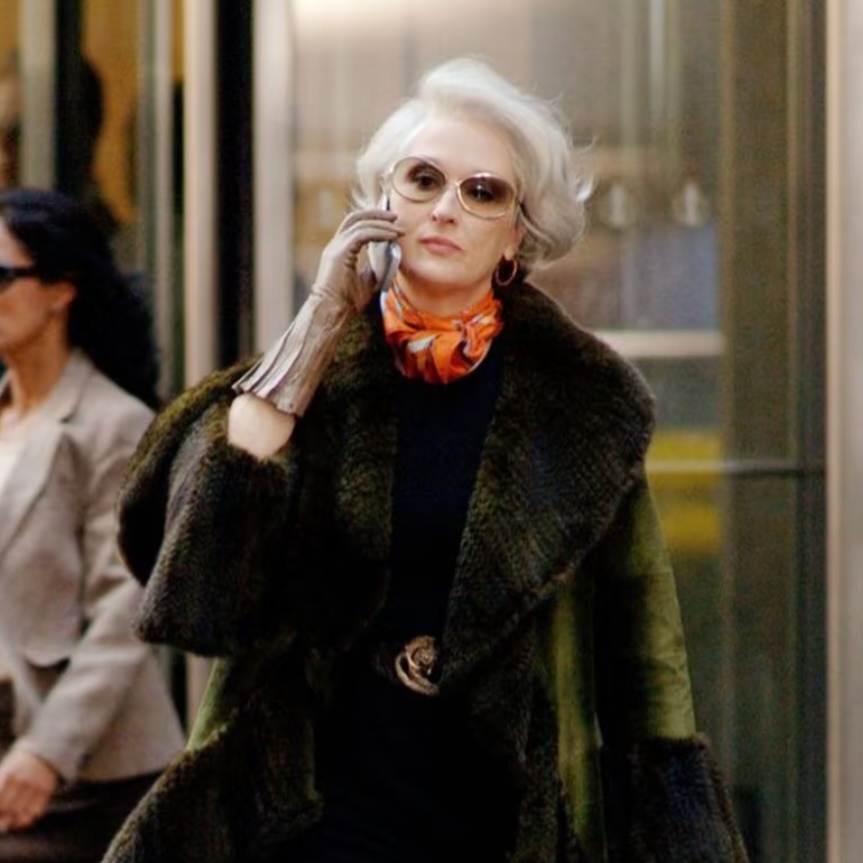The Devil Wears Prada is not only a movie about fashion and the workplace, but it also reveals the powerful role of the media in shaping public opinion and values. Through the experience of the protagonist Andy Sachs, the movie demonstrates the phenomenon of “Manufacturing Consent”, i.e. how the media influences public attitudes towards luxury and fashion through various means. This paper will explore the power, influence, and critical thinking of the media in relation to the plot of the movie.
Miranda’s Magic: The Queen of Fashion
Miranda Priestly in the movie is a love it or hate it character. As the editor-in-chief of Runway magazine, she has absolute authority and influence.
The power of the media: through Runway magazine, Miranda not only shapes trends in the fashion world, but also influences the public’s perception of fashion and luxury. Every criticism and praise she receives can immediately change the value and market performance of a brand. This power demonstrates the enormous role of the media in shaping public opinion. However, this power also raises moral and ethical questions; are Miranda’s decisions always fair and transparent? Is this influence of the media abused?



Andy’s transformation: from skepticism to recognition
Andy Sachs was skeptical of the fashion world at first, but decided to join Runway magazine in order to realize her career dream. Under Miranda’s tutelage, Andy gradually adapts to the standards of the fashion industry, going from wearing casual clothes to wearing couture, transforming herself from an ordinary girl to a newcomer in the fashion world.
Assimilation by the media: Andy’s transformation demonstrates how the media can gradually change an individual’s values and behaviors through workplace pressures and cultural climate.
She begins to imitate Miranda’s style, even forgetting her original intention at some point. This process of assimilation is a typical manifestation of ”Manufacturing Consent”. However, does this assimilation mean that the individual’s independent thinking and values are sacrificed? This means that the influence of the media is a double-edged sword that can either help an individual grow or lead to disorientation.



Media and Public Opinion
Runway magazine sets the agenda for the fashion world through its content and cover choices. These agendas not only influence trends in the fashion world, but also public attitudes towards fashion and luxury.
Shaping Public Opinion: The movie shows how the media, through its coverage and publicity, shapes the public’s perception of fashion and luxury. The public’s perception of fashion brands and purchasing behavior is largely influenced by the media. However, is this influence always positive? Has the media exaggerated the importance of fashion in some cases, leading the public to overindulge in materialistic pursuits?
The Importance of Critical Thinking
The Devil Wears Prada not only demonstrates the influence of the media, but also reminds us of the need for critical thinking when dealing with media messages.

Reference
•Chomsky, N. and Herman, E.S. (1988)Manufacturing consent: The political economy of the mass media. New York: Pantheon Books.
•Bolin, A. (2010) Fashion and media: Power, image, and identity. London: Routledge.
•Brody, S. (2012) Fashion and power: The role of media in the fashion industry. London:Bloomsbury Academic.
•Rodriguez, M. (2015) ‘The impact of fashion media on consumer behavior’, Journal of Fashion Marketing and Management, 19(3), pp. 345-360. doi: 10.1108/JFMM-02-2015-0015.
•Lee, J. (2017) ‘Power relations in the fashion industry: The role of media’, International Journal of Fashion Studies, 4(2), pp. 123-140. doi: 10.1386/ijfs.4.2.123_1.

